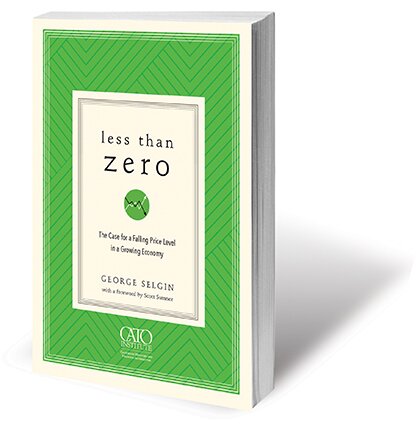Most economists once believed that monetary policy should aim at achieving full employment, but we now know that holding unemployment below its natural rate has dangerous consequences. Could it be that another supposed economic ideal — zero inflation — is similarly wrong-headed?
In his 1997 book Less Than Zero, Cato’s George Selgin first made the case for allowing price levels to vary to reflect changes in productivity. Now, a new edition of Less Than Zero from the Cato Institute updates this important and prescient argument for 2018.
In the introduction for this edition, Scott Sumner of the Mercatus Center at George Mason University makes the case that Selgin’s book was “ahead of its time” and that it is time to return to Selgin’s argument for a productivity norm, where prices would rise or fall inversely to changes in productivity.
Selgin himself, however, contends that his idea is not entirely innovative; over the course of his research, he found that similar arguments have been made by other early 20th-century economists he admired. “Eventually, it became clear to me that — far from being novel — my understanding of deflation had once been almost orthodox, having been shared by prominent economists of many different schools of thought, only to be flung aside in the wake of the Keynesian revolution,” he writes. Two decades after its first publication, the ideas in Less Than Zero are no longer as radical as they once were, as more economists are arguing for nominal income targeting and speculating about the possibility of “good” deflation. With that new climate in mind, this edition revisits these important and thought-provoking ideas.
